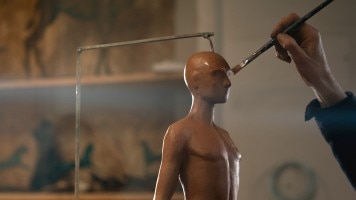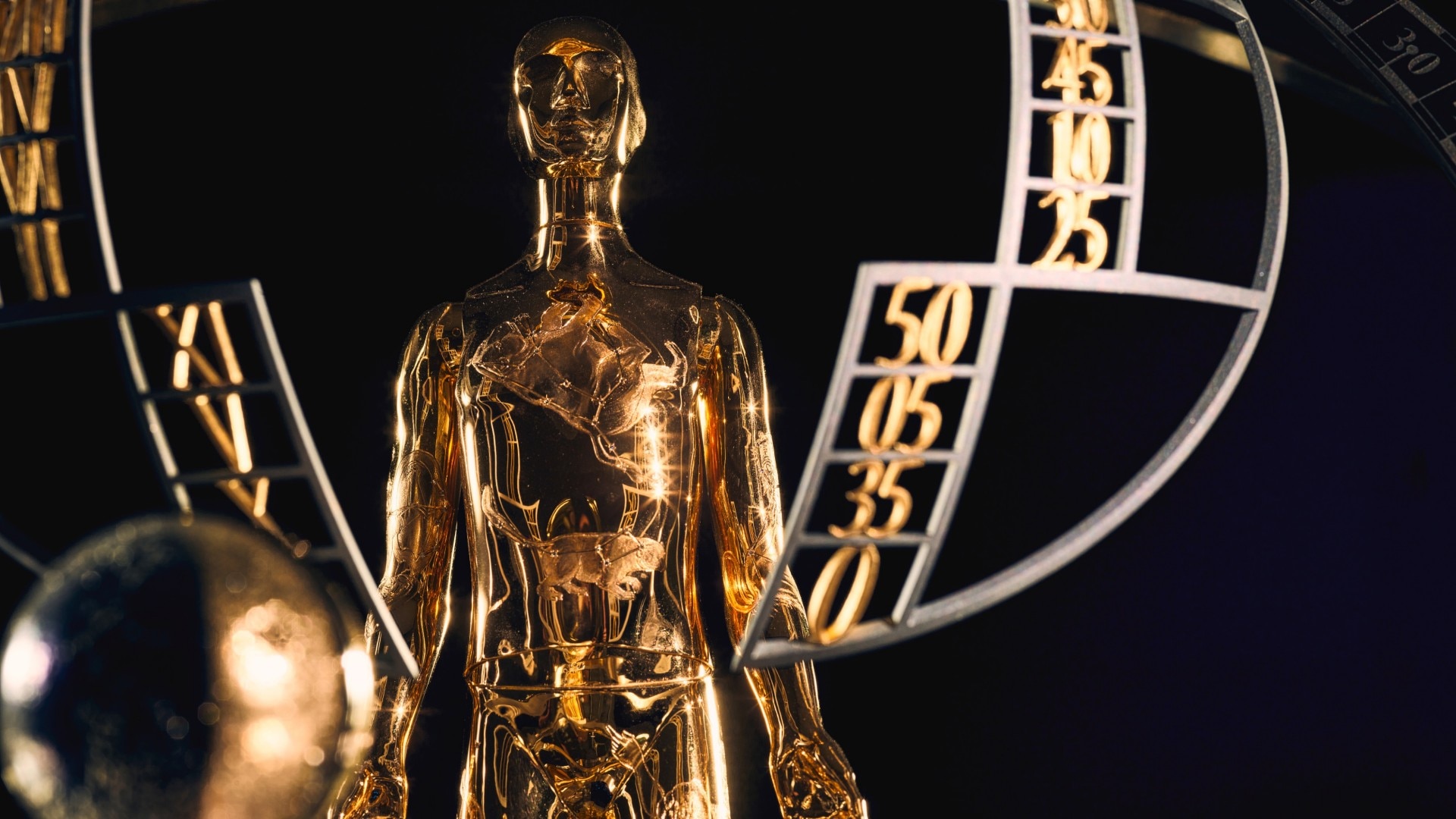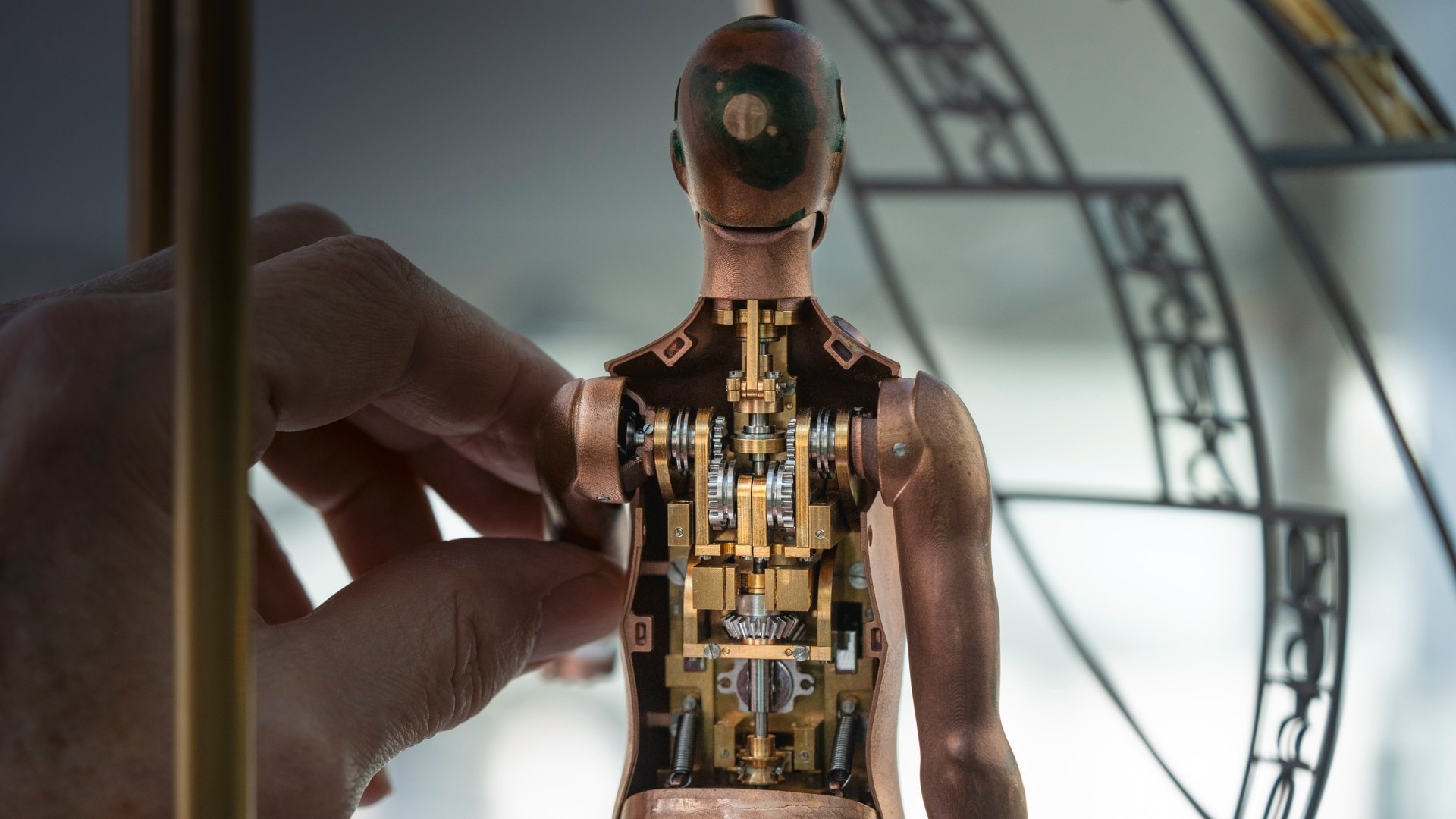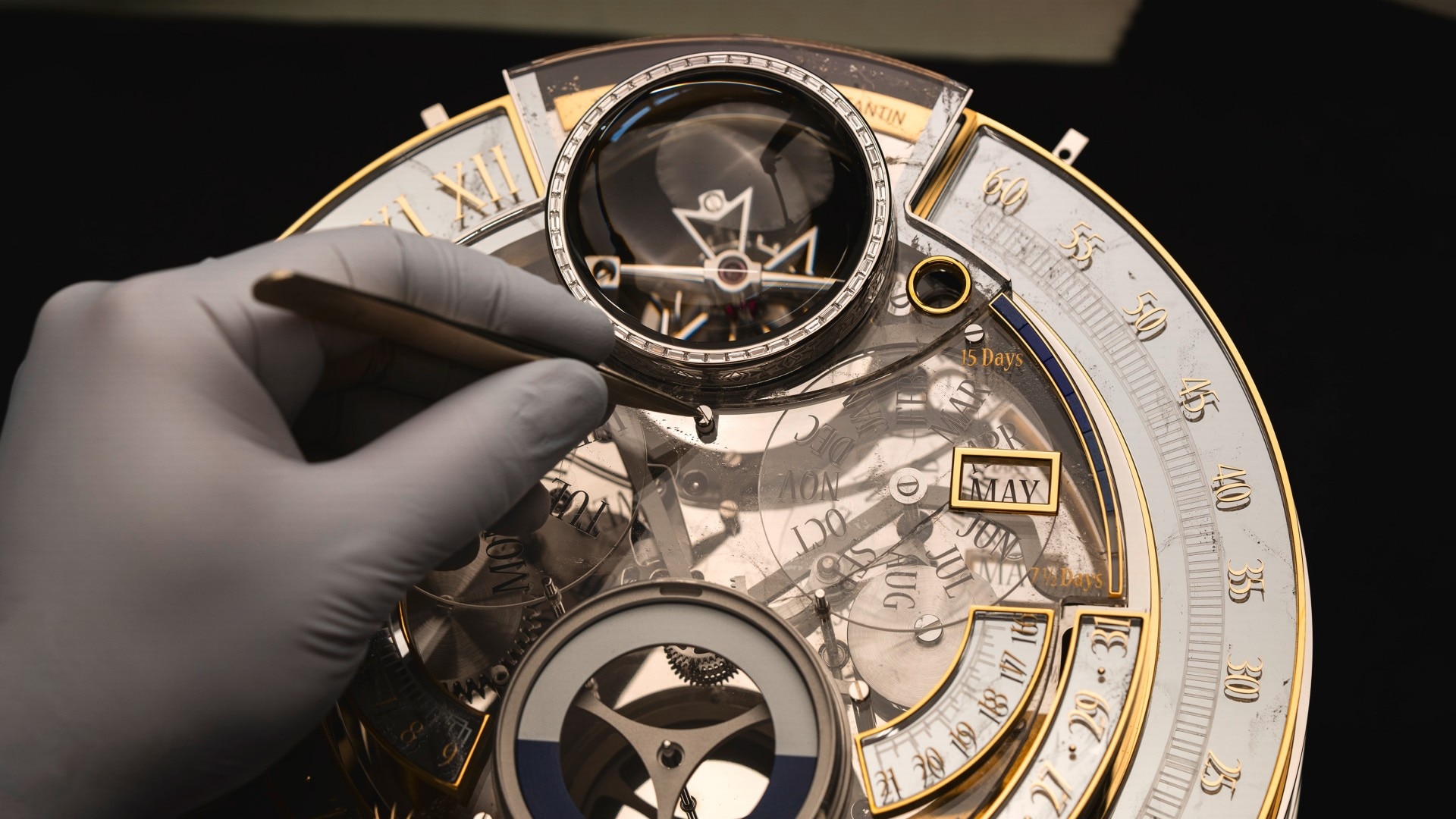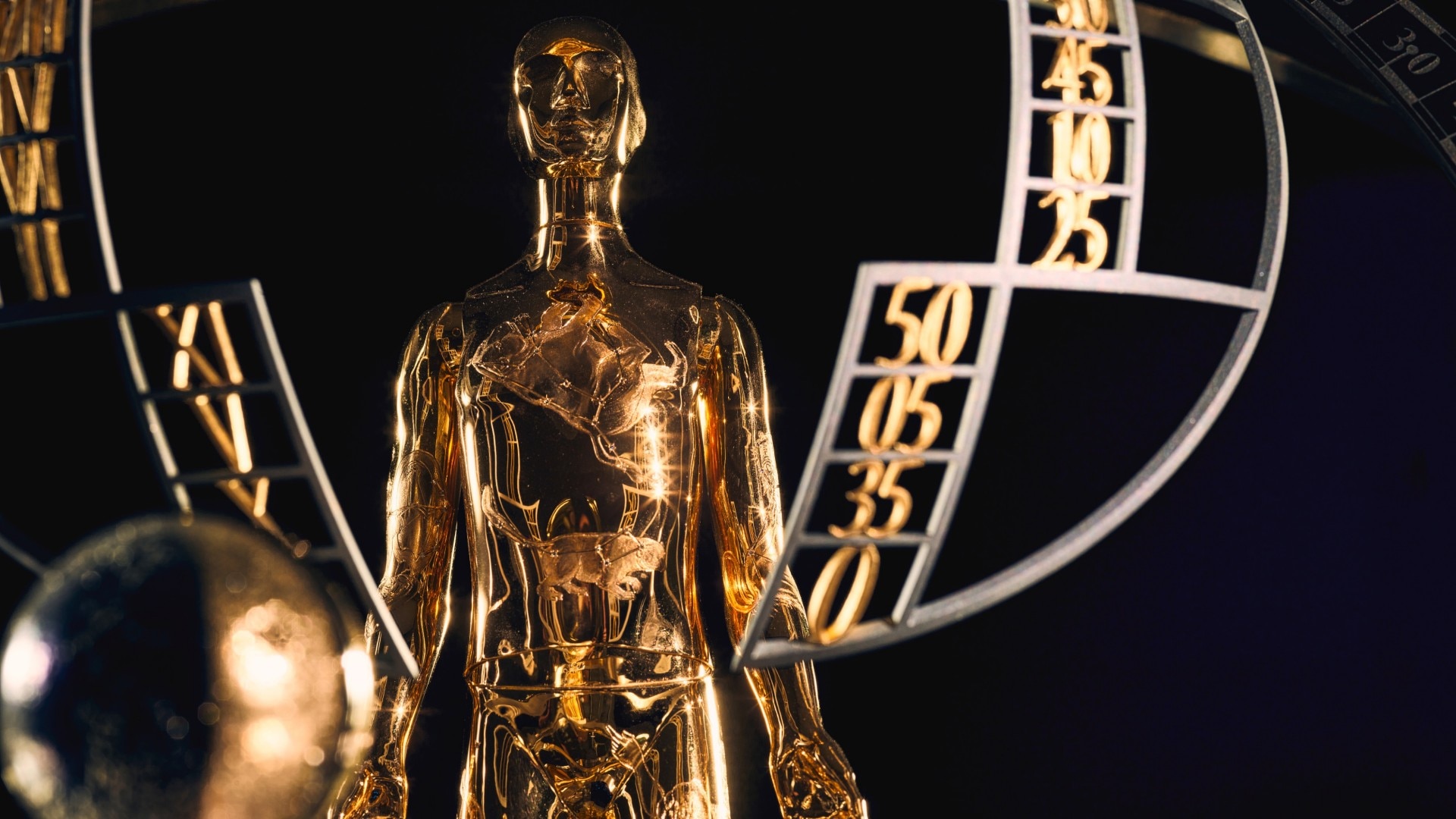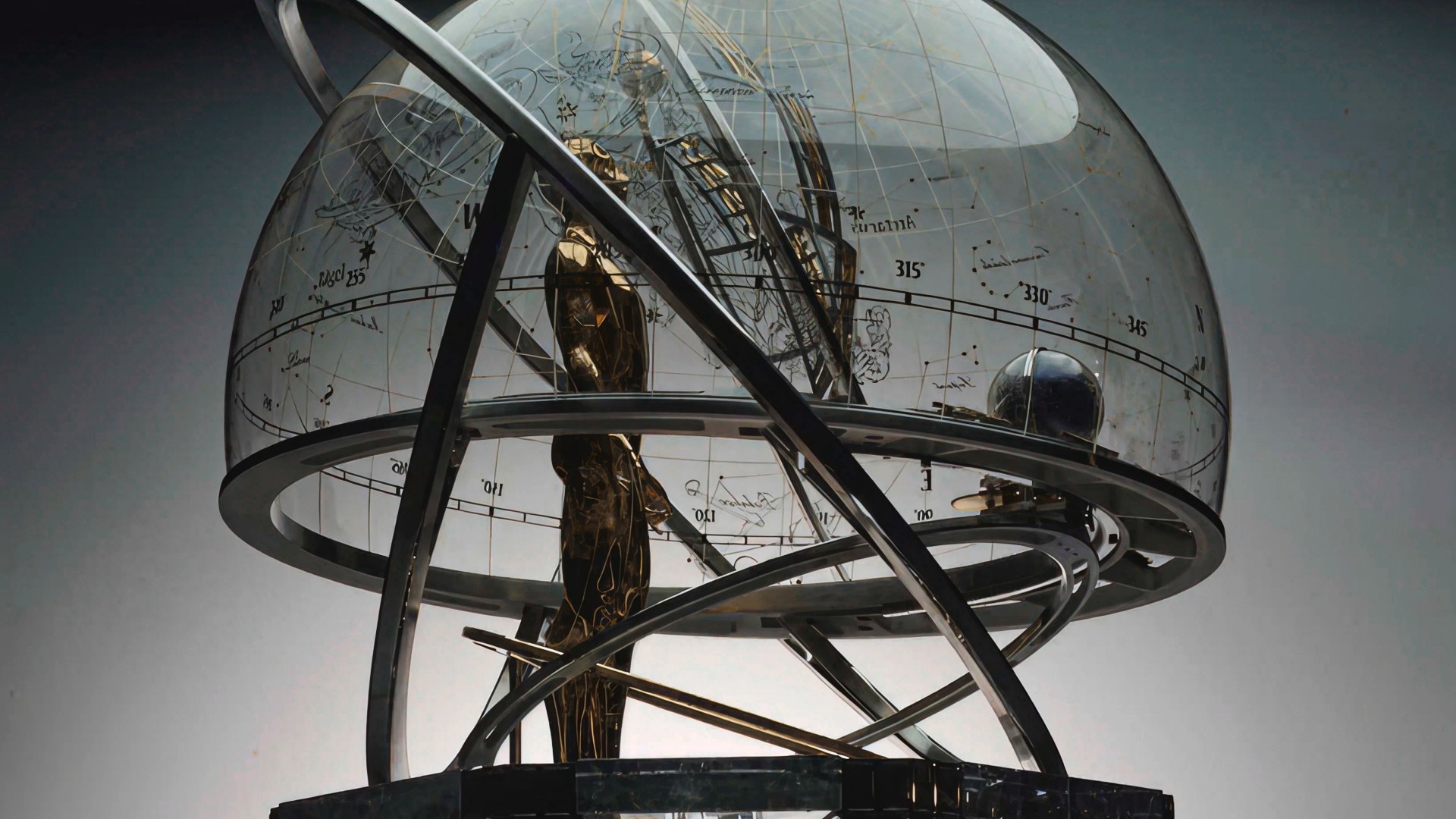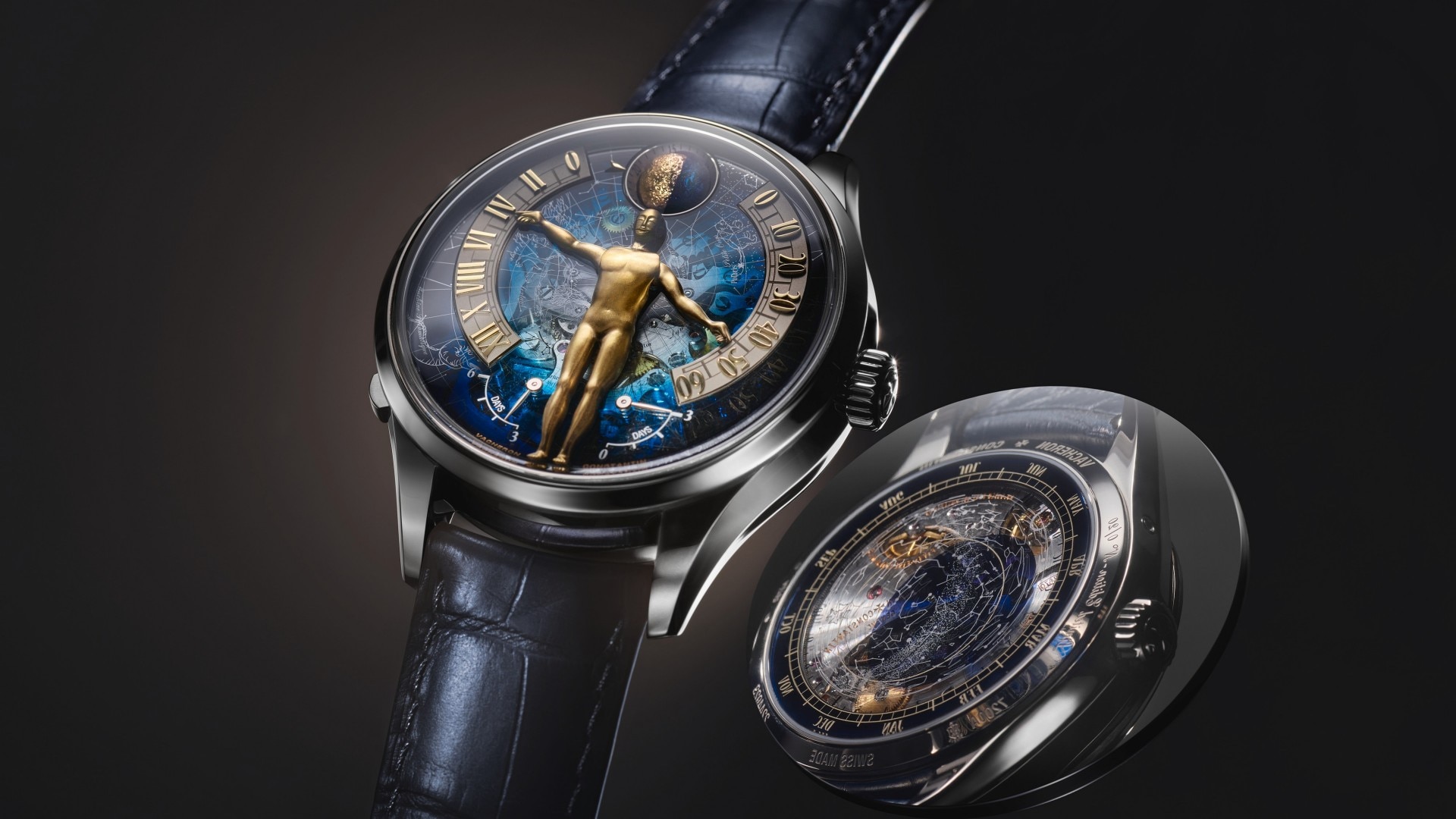An Automaton unlike any other
Since Antiquity, automata have either been standalone devices, or mechanisms that add an animation to a clock. Today, Vacheron Constantin has rethought this concept, inviting the automaton into the movement as a watchmaking complication to indicate the hours and minutes. The Astronomer thus stands as the soul of La Quête du Temps, translating Time as graceful movement set to music.
Time told through gesture

For the Astronomer to accomplish its task, a mechanical memory transcribes the hours and minutes from the calibre to the automaton. This patented process translates the time into realistic gestures that change from one moment to the next due to the complex dial inscribed on the dome.
144 movements, infinite emotion
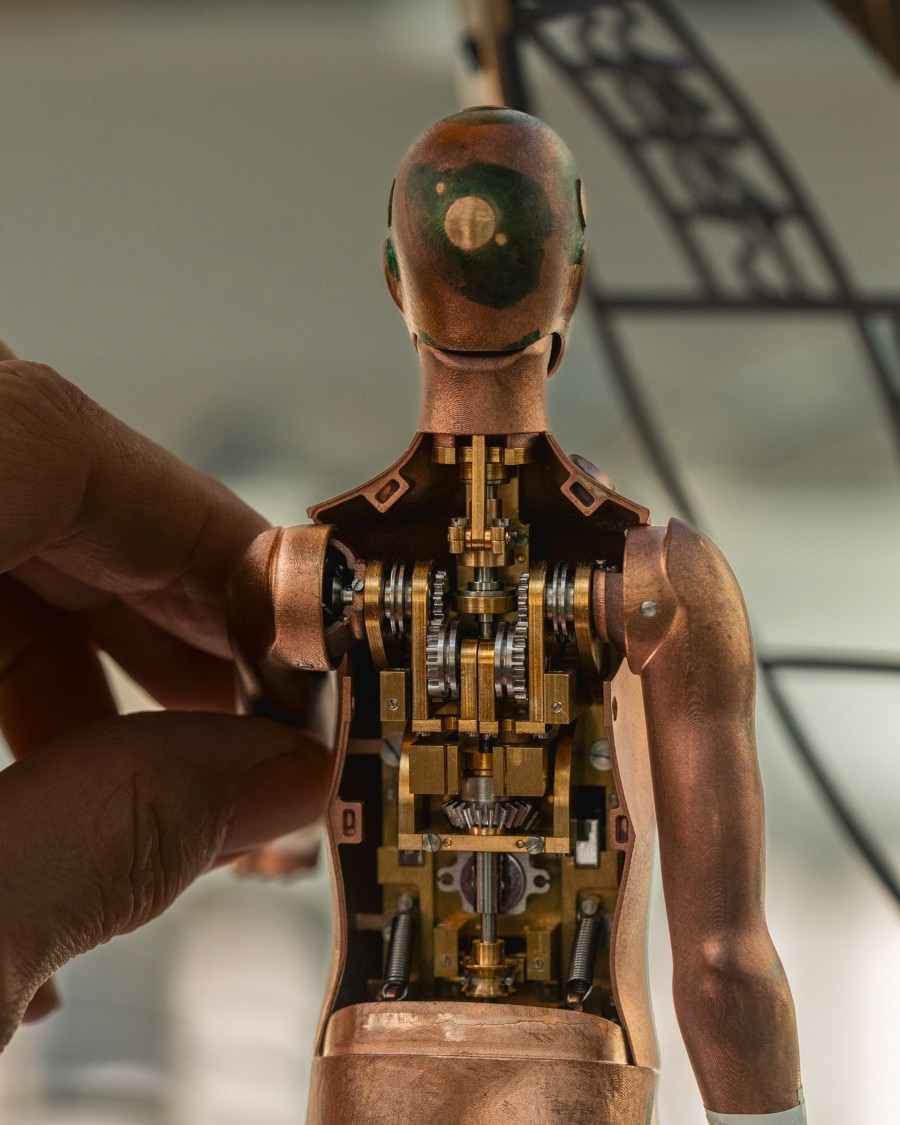
Each activation of the automaton reveals a completely unique gesture. The scales are deliberately arranged in random order, ensuring that time is never indicated the same way twice. The Astronomer's body moves across multiple axes with exceptional fluidity and silence, mimicking the elegance of human movement.
Behind this choreography lies a feat of mechanics: 144 distinct gestures, powered by 158 cams, all hand-adjusted to produce a lifelike presence.
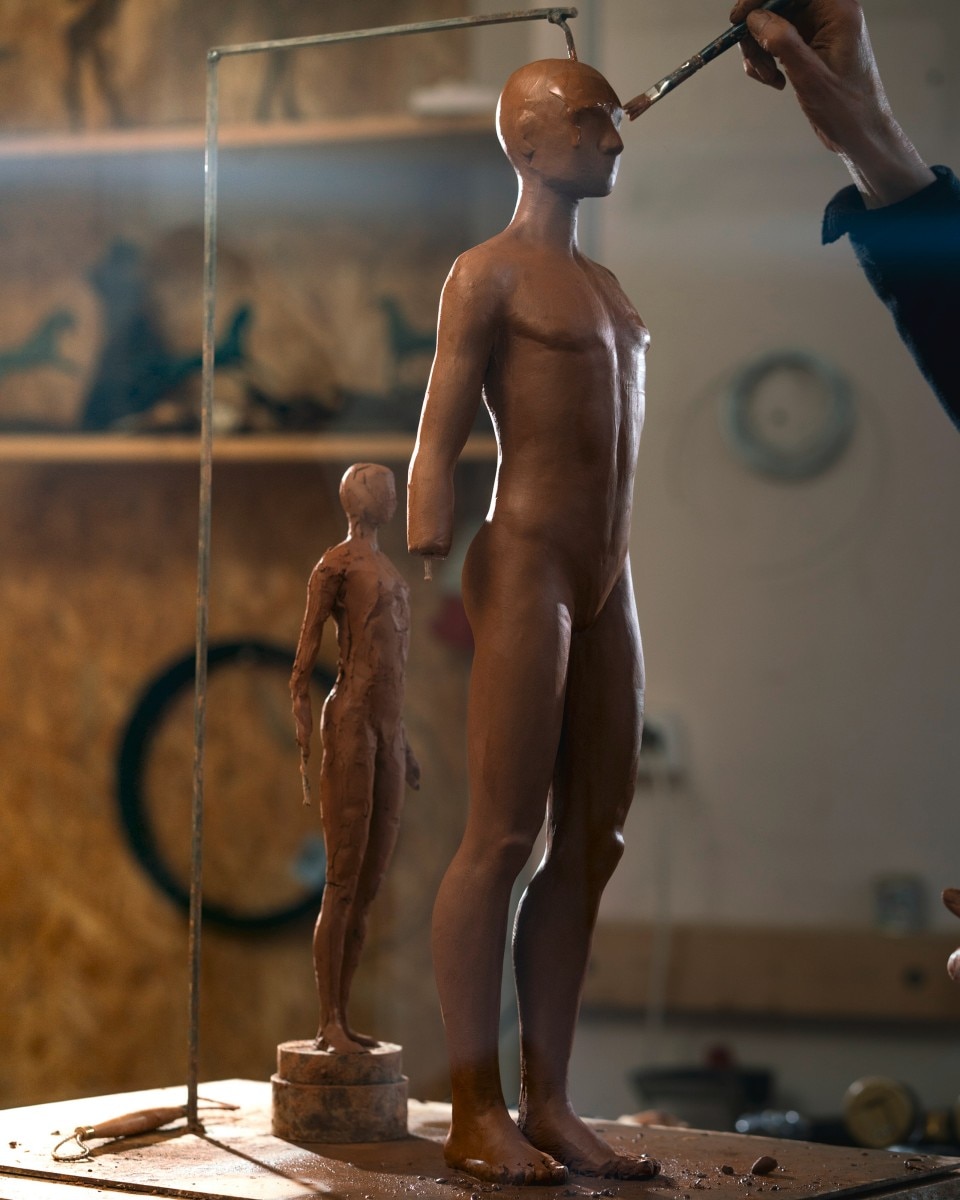
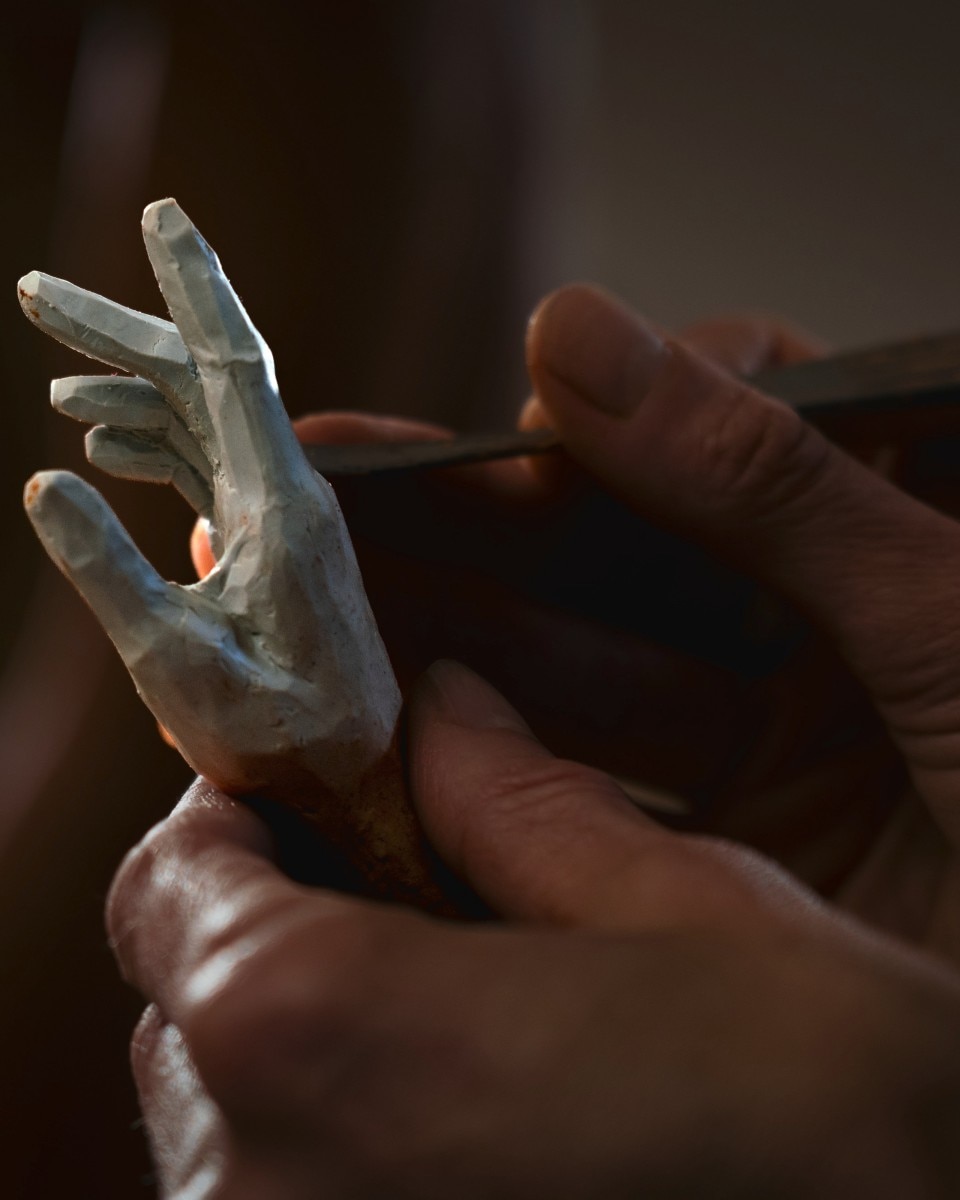
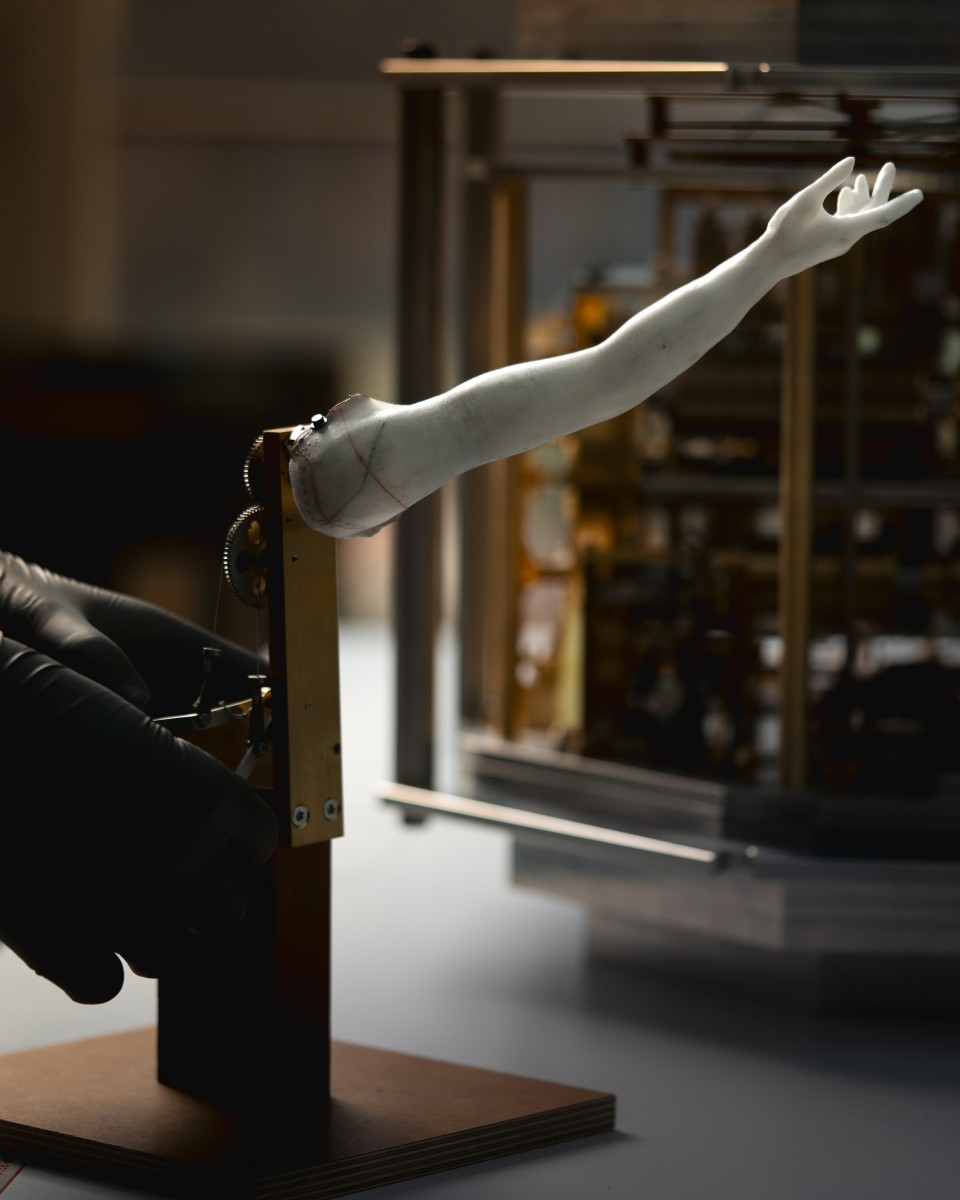
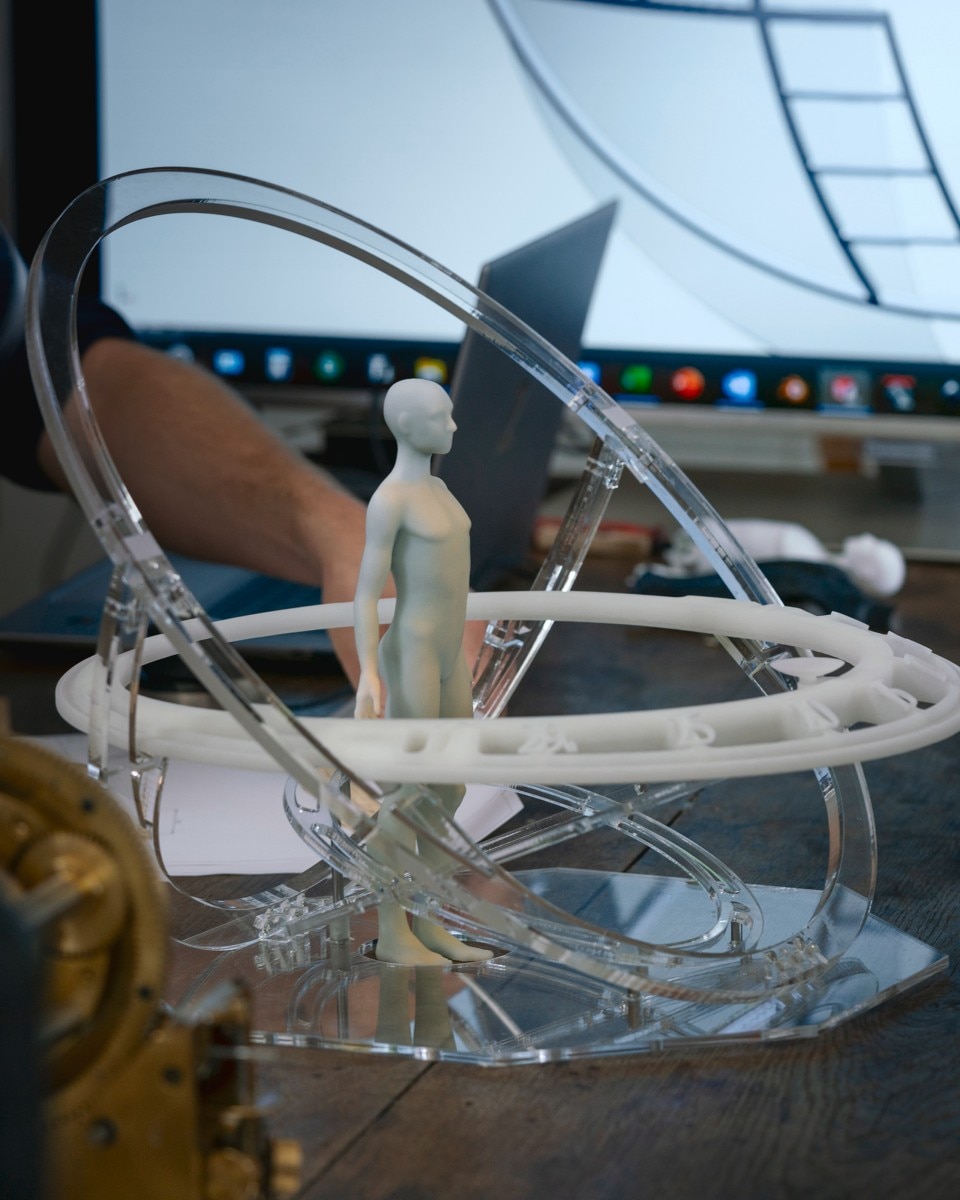
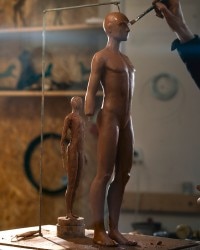
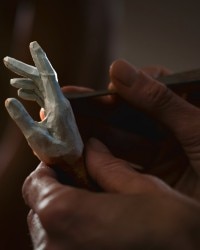
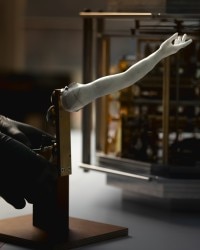
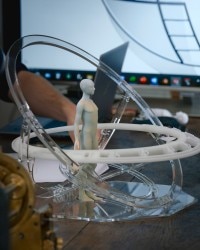
Crafted like a sculpture, animated like a dancer
The Astronomer was sculpted in bronze by François Junod, engraved with constellations, set with diamond stars, and gilded like a jewel. Its posture, deliberately androgynous and graceful, evokes the movement of a dancer, adding emotion to each sequence.
This same knowledge made it possible to precisely choreograph the Astronomer's smallest gesture to the musical score.
144
Unique gestures perfomed by the Automaton to indicate time and interact with its environment.
158
Cams precisely engineered to control the automaton's choreography
7
Years of development, involving watchmakers, engineers, automatists, artists, astronomers, and musicians
28 cm
Tall
Three Acts of Mechanical Poetry
Announced by a melodic alarm, the Astronomer awakens, greeting day and night, tracing the Moon’s arc.
Accompanied by mechanical music (metallophone + Wah-Wah tubes), it points to constellations, echoing mankind’s fascination with the stars.
With gestures that change at every activation, the Astronomer indicates the current hour and minute, a living alternative to hands and dials.
The Astronomer
The figure poised beneath the glass heavens appears natural and balanced, concealing a tremendous amount of underlying ingenuity. At 40cm in diameter, the dome over the Astronomer proved a technical challenge, ultimately solved by resorting to arched supports like those of an armillary sphere. Likewise, the idea of indicating time on suspended scales within the dome posed issues of weight, resolved by the sintering of titanium alloy powder to create fine yet strong grids.
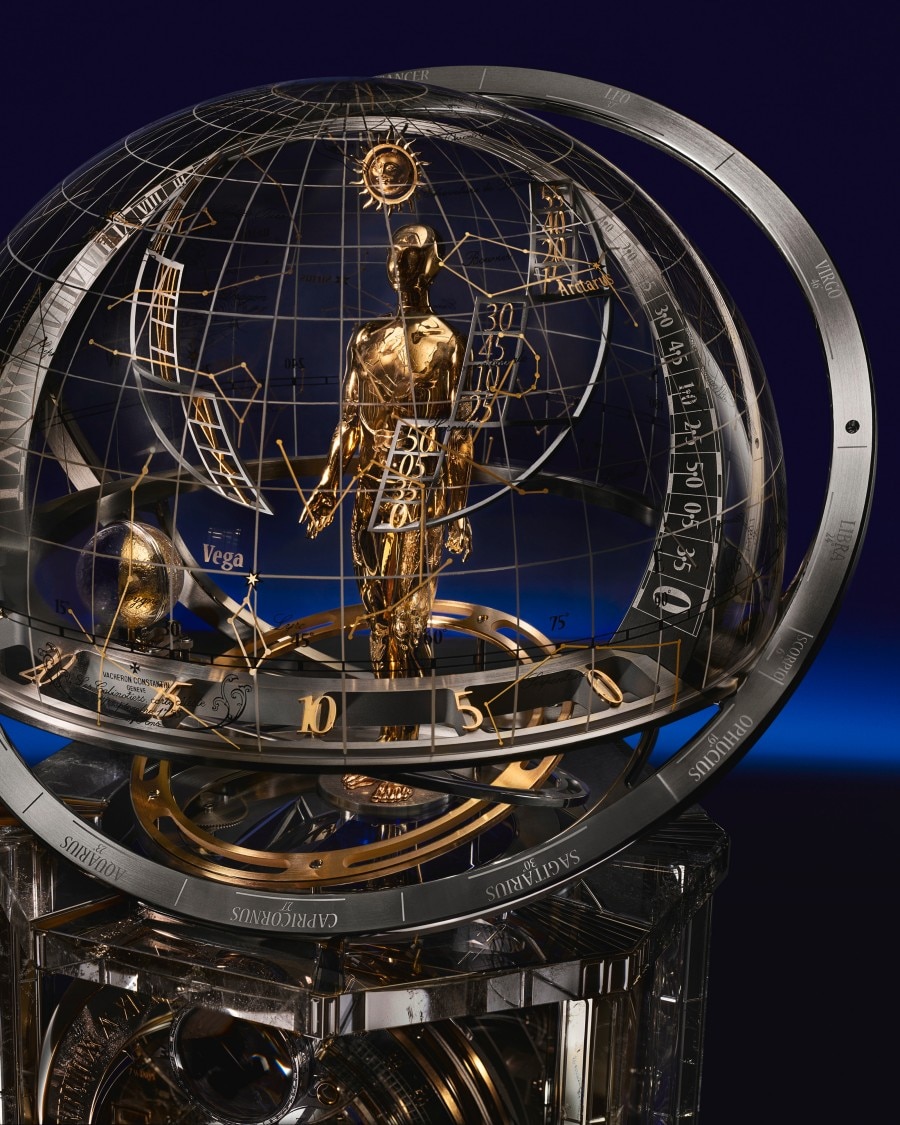
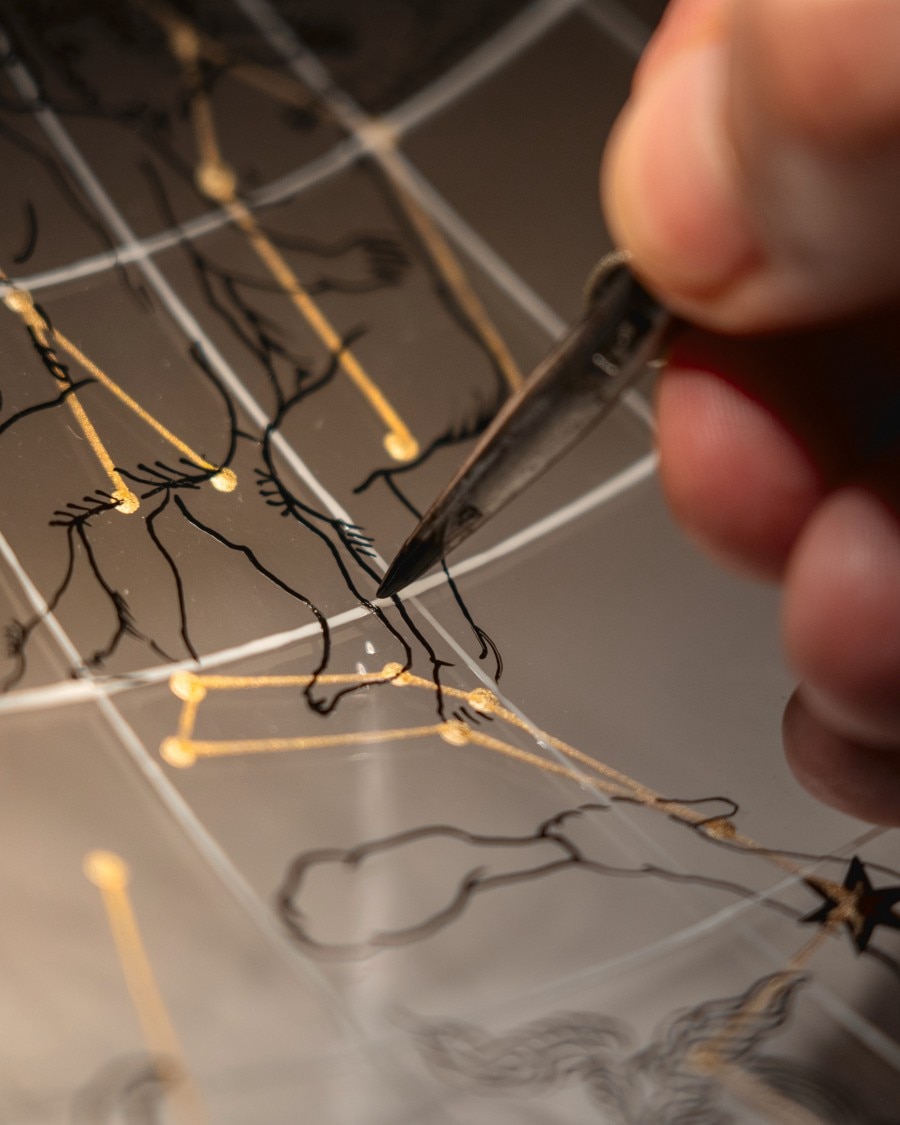
The hand-painted dome
Rising above the automaton, the glass dome is painted freehand from the inside to depict the night sky as it appeared above Geneva on September 17, 1755, the day Vacheron Constantin was born with the signing of its first apprentice. This precise celestial configuration, developed in collaboration with the Geneva Observatory, includes zodiac constellations along the ecliptic as well as Orion, Ursa Major and Ursa Minor, the stars children often learn to recognise first. Across its curved surface, the painted cosmos becomes both a map of origin and a stage for wonder, where time begins with the stars.
François Junod, the Automaton sculptor
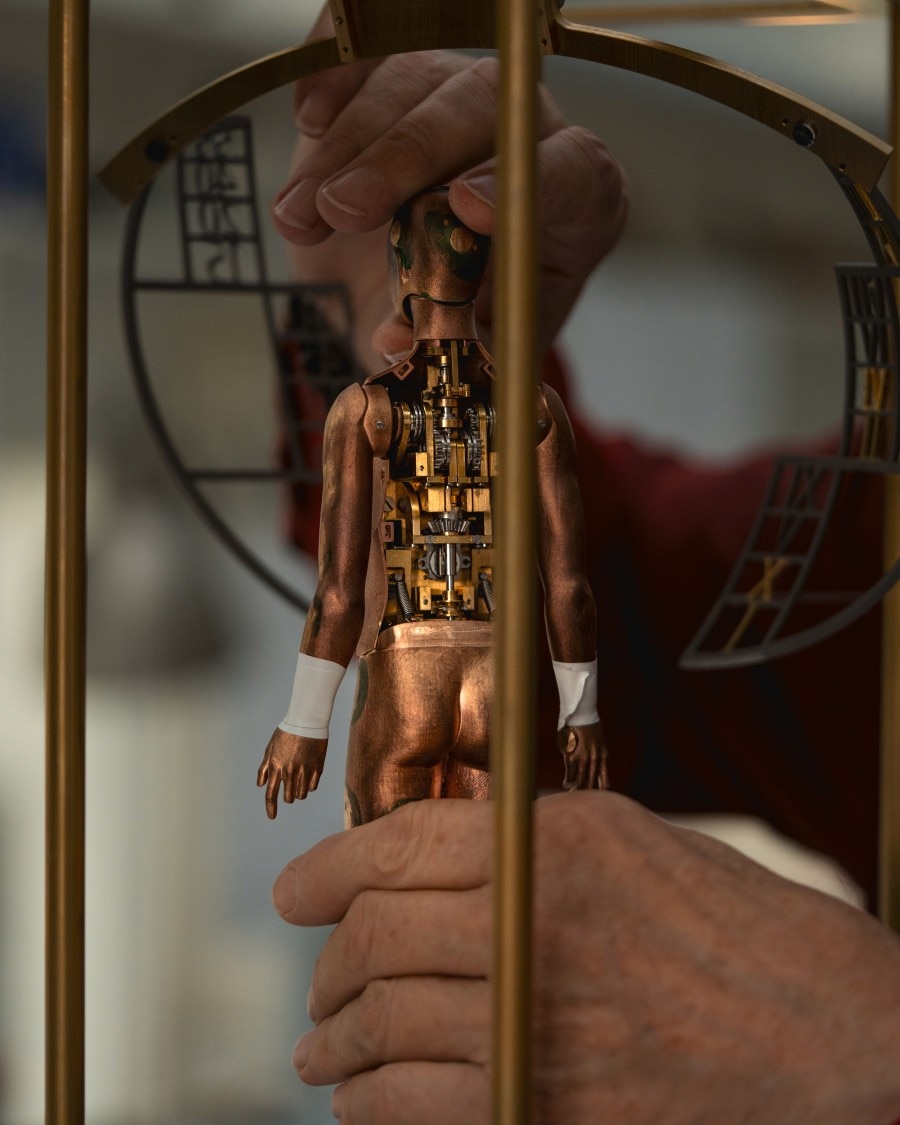
Recognised as the world’s greatest automatier, François Junod brought his unrivalled savoir-faire to La Quête du Temps. From his workshop in Sainte-Croix, cradle of automatons, he sculpted and articulated the Astronomer in bronze, hand-engraved it with constellations, and gilded it like a jewel. In close collaboration with Vacheron Constantin’s watchmakers and engineers, he devised articulation systems, head kinematics, and a patented mechanical memory, innovations that gave lifelike grace to 3,923 components, transforming mechanics into presence.
